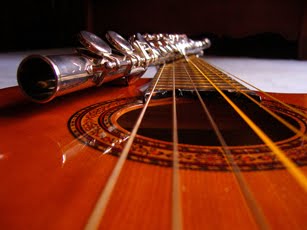
Art imitates life. But, in reality, life is art itself.
Human experience feeds the minds of creative people to produce masterful representations of such experiences. Hence, the greatest masterpieces record the pain and the joy of living – La Pieta, Mona Lisa, Les Miserables, The 5th Symphony and many others.
Art is also in nature. Scramble nature and you get neu art. That is, what God had established in His creation – the first real and perfect art – causes humans to harness the divine ability and desire to also create, to produce or to express life in an external and autonomous medium. When Michelangelo formed David out of fine Carrara marble, he would have surely given it breath if he had the ability to do so. Like Geppetto getting his wish for Pinocchio to become a real boy.
Didn’t we all have that fervent desire to make our plastic toy soldiers attain life of their own so that they can fight real battles against one another? Or baby dolls to come alive so that girls would have real persons to talk to instead of invisible friends? Perhaps, we have finally given that power to children with virtual online-gaming where nothing is left to the imagination.
Today, art has come very close to attaining a life of its own. And our children, like the children of Hamelin, are mesmerized into following its call to perdition and oblivion in the name of business. Hence, instead of living the life they were meant to live, they now live for, with and in their art. The day might come when their virtual minds will have no place in this real world. Or worse, when they will have the power to turn reality into virtuality – that is, replacing eternal concepts and values with fleeting and artificial ones. Star Wars, with its sci-fi retrofitted religious undertones, may have signaled the march toward that ominous direction.
Creating art that breathes or inspires life is every artist’s goal. This is, for certain, what filmmakers do in their medium. And so do musicians, writers and even the ordinary person who wields a digital camera. To create something that we can all go back to and allow it to speak to us once more of life, of beauty and of endless joy. Anything else, we delete or store in our archives for mere reference.
Our own storage of the art we have individually created or collected grows and grows by the hour and by the day. Everyone has it; yes, even the housewife who keeps track of new recipes and the husband who has a pile of pirated CDs of Manny Pacquiao’s fights.
What we see reproduced through the various art media, we treasure because they – whether we know it or not – help us celebrate the victory of the human spirit over darkness and chaos. And, yes, over mediocrity. The Spirit of God did it in the very beginning when the pervading nothingness and absence of order were dispelled with the arrival of Light.
With Light, God revealed the essence of order and wisdom. Of beauty and truth. Of freedom and life. Everything else we do in the name of art is a tiny attempt of god-like creatures imitating the Giver of Light and Life. In the end, even our very own life is an artistic expression of the Light and Life we have been privileged to receive.
To imitate God then through all the possible means given to us – teaching, singing, selling, leading, sporting and healing – is the highest form of art there is. One doesn’t need to be like Da Vinci or Luna capturing the ultimate picture of order, beauty and life in static visual form, but rather through the real, space-time en-ACT-ment of life as a continuation of God’s creation. God working through our lives is not a stale theological principle or doctrine but a true, inescapable plan anyone may willingly accept based on one’s actual recognition of how He actually does it.
Many fail to do so. Why? Because of one basic fault that humans are so prone of doing in spite of its obvious inanity. It is this: We think that to live a successful (read: happy) life is to imitate those who (whether real or fictional characters) have attained what we perceive to be perfection or fulfillment in this world. In doing so, we end up reproducing someone else’s life which may often be a misdirected life? It is a case of life imitating art – the art (or lifestyle) of others.
Yes, to a certain degree, we can emulate and follow the examples of our heroes and idols. But, ultimately, we must live a life of our own. Not just simply to “have a life” as we often hear people say in the sense of living it up or having a good time. It means to discover for ourselves the secrets of our very being and to develop what we have in order to produce “Neu Art”. God designed it to be that way; we only need to learn as much as we can to come up with the best of what we can ever be. Christ performed great miracles; yet, He told His followers they would do greater works. New and great works, everyone can also do, for nothing is impossible with God.
Just as every artist seeks to find the core of his subject matter and distills it into a coherent movie or a composition, we must address all our issues in life and arrive at a simple theme that will drive us to the peak of our existence. Only then can we clearly see ourselves and the road we have chosen to travel. Only then can we leave behind the childish notions we once held in the darkness or ignorance of our past.
Recently, the sight of male UP professors, personnel and students baring their bodies in celebration of the University’s Centennial celebration exhibited the folly of life imitating art (literally at that), thus, reversing and defeating the essence of art. The Oblation already encapsulates the Christian idea of a “pure, living sacrifice”. UP and the media could have given that ultimate human ideal its proper place in the celebration by highlighting the Oblation both as a great work of art and as a noble work-in-progress in the lives of UP students, graduates and employees. (If they did, I must have missed it.)
In the annual Lantern Parade done on December 17, the ordinary UP workers who did not have the artistic skills to conceive of a fancy lantern (and, obviously, not even the budget for it) marched humbly and inconspicuously before the community, unheralded and unappreciated by the crowds who waited to see the eye-catching and festive display of the more endowed groups. Such hype often clouds our vision to what is truly essential in life. Hence, this celebration of a hundred years of so-called excellence may have succeeded only in perpetuating the supremacy of the few leaders of society and sidelining the majority of the people whom they have intended to serve.
One doesn’t have to have perfect physique or great intelligence to truly understand and embody the essence of a sacrificial life and contributing something worthwhile. One doesn’t even have to reach college or even run naked to show that you have attained enough learning. The foolishness of this world (running naked definitely falls under it) is so pathetic we cannot even help from laughing at it and with it. No, we see men wearing women’s underwear and parading as lewd angels and we clap and celebrate their “freedom of choice”. We have, therefore, violated both Divine Order and Natural Order and given that misdeed a respectable place in the so-called highest seat of learning. We have failed to distinguish between good and bad even in our art.
Art (a potent tool of the mass media), in the hands of the experts, can sway the masses and deceive them to fall into forgetfulness and corruption. But it can also inspire and lead people to genuine success in life.
“Neu Art” -- alright, let us call it Living Your Own Life as the Ultimate Art – is to put your own life on the altar of sacrifice based on your unique personality and circumstances. Whether poor or rich, young or old, educated or not, you can obtain enough wisdom to stand beside anyone else and accomplish the tasks given to you by heaven. But why sacrifice? Because life is sacred and art is that symbol of perfection which we hold close to our hearts. It is what makes us both, truly and essentially, human and divine.
The secret to life is to know Who created nature and order and what they were meant to achieve in our lives. Without that knowledge, we will end up living an artless life and creating lifeless art.
(Photo above: UP students enjoying the start of Christmas season during the annual Lantern Parade. Having a ball!)


1 comment:
Post a Comment